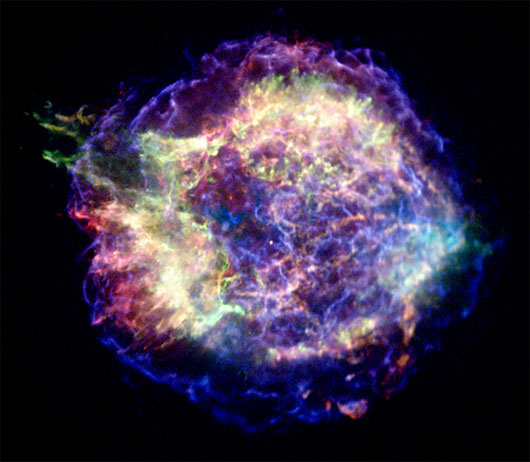Create supernova explosions in the laboratory
Scientists have used laser beams that are 60,000 billion times more powerful than lasers to create a supernova explosion in a laboratory to study one of the most powerful events of the universe.
>>>NASA creates cosmic dust in the laboratory
Supernova explosions, activated when the fuel inside a star explodes or its core collapses, releases a terrible shockwave that sweeps through several light years of space for several hundred years.

Image of Cassiopeia A supernova explosion captured by Chandra Observatory - (Photo: NASA)
To study what can create unusual shapes when the explosion occurs, a group of international experts led by Oxford University has devised a method to analyze this phenomenon in the laboratory. Instead of observing in the space environment.
'Hearing sounds like it is unusual for an experiment inside a room to be used to study celestial physics phenomena that span many light years' , according to Space.com. words of Professor Gianluca Gregori of Oxford University.
'In fact, the laws of physics are the same everywhere, and physical processes can be scaled down like the waves generated in a tank can be similar to waves on the ocean. Therefore, our experiments can contribute to additional information for events such as Cassiopeia A ' explosion , according to Gregori team leader.
The report from Nature Physics reports that the Cassiopeia A explosion was first observed about 300 years ago, belonging to the constellation Cassiopeia, about 11,000 light-years from Earth.
- The supernova explosion can destroy Earth from 50 light years
- Why the dead body
- Supernova explosions shoot super-fast stars across the galaxy
- The solar system fits in 'bubble'
- The supernova explosion is 10.5 billion light-years away from Earth
- Strange rays from the cosmos excite the ancient people with two legs
- Primary school girls discover explosions of superstars
- Spectacular supernova explosions in the universe
- NuSTAR telescope helps decode supernova explosions
- Build 3D core map of a supernova
- Universe photo: Beautiful butterfly wings in the universe
- Supernovae do not produce the largest element
 Van Allen's belt and evidence that the Apollo 11 mission to the Moon was myth
Van Allen's belt and evidence that the Apollo 11 mission to the Moon was myth The levels of civilization in the universe (Kardashev scale)
The levels of civilization in the universe (Kardashev scale) Today Mars, the sun and the Earth are aligned
Today Mars, the sun and the Earth are aligned The Amazon owner announced a secret plan to build a space base for thousands of people
The Amazon owner announced a secret plan to build a space base for thousands of people